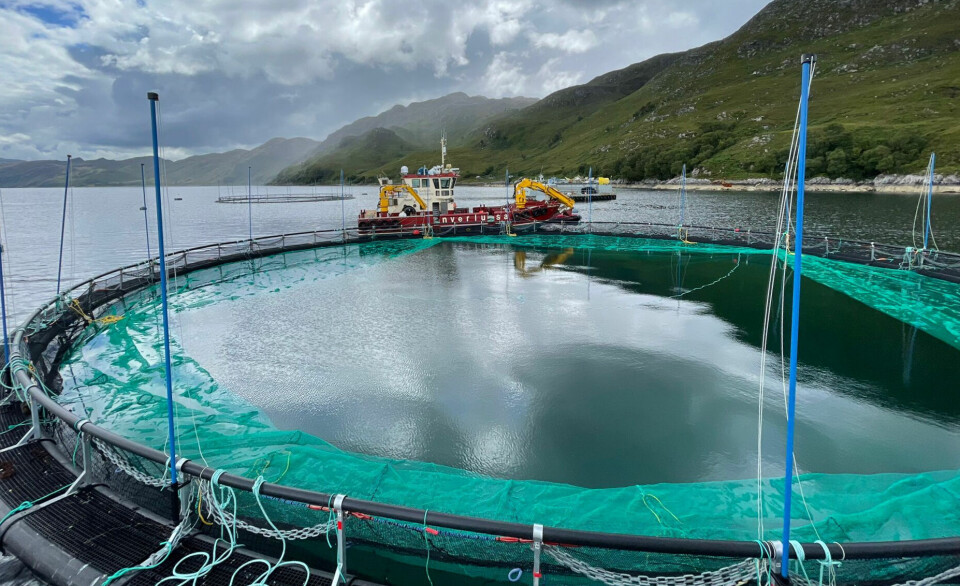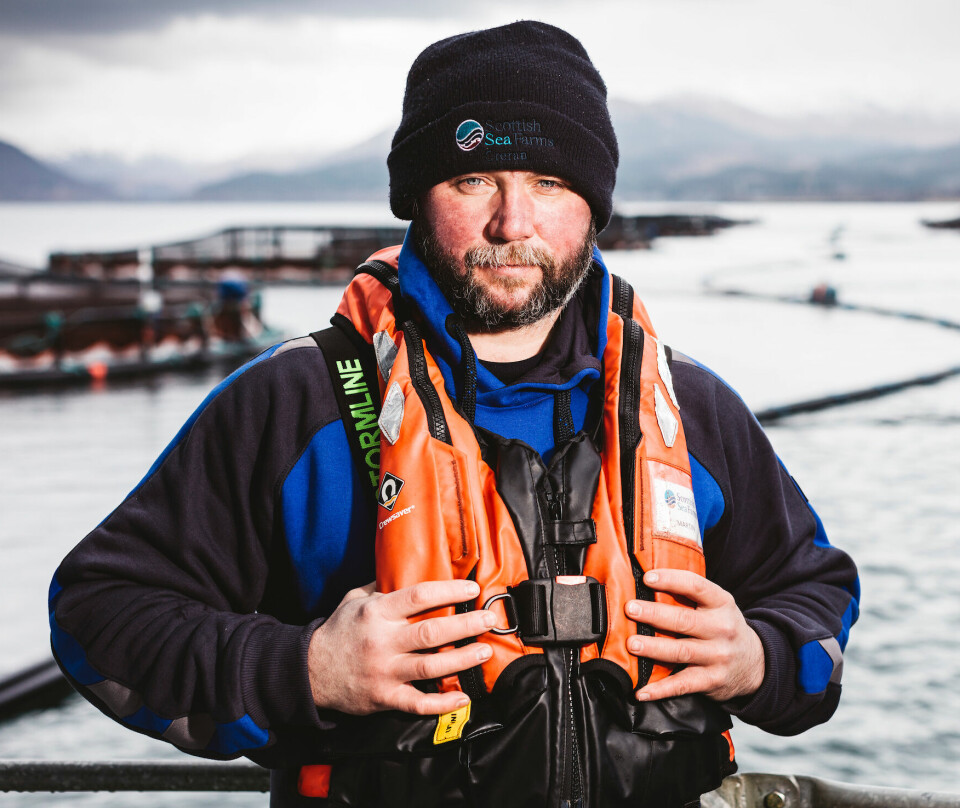
£1.5m upgrade for sites hit by micro-jellyfish last year
Bigger pens will enhance growing conditions for Scottish Sea Farms
Salmon producer Scottish Sea Farms is spending £1.5 million to upgrade farms in Loch Nevis where fish were severely impacted by micro-jellyfish blooms last autumn.
Two of its three farms in the loch – Nevis A and Nevis B – are being modernised, while Nevis C is being temporarily rested, SSF said in the latest edition of its newsletter, The Source.
Whereas previously there were 12 x 80-metre-circumference pens at each farm, there will now be five 120m pens, reducing the overall number of units from 36 to just 10 while maintaining the same overall biomass.
This will allow more space between pens and increase water exchange and oxygen flow in and around farms, which in turn will enhance growing conditions.
With fewer pens for the farm teams and support vessels to get around, the new configuration will also help maximise operational efficiencies and response times.
Climate challenges
Innes Weir, SSF’s regional production manager for the Scottish mainland, told The Source: “We’ve seen at other farms that have been through the process already that consolidating into fewer pens but of a larger size gives us the ability to better manage our resources, equipment, fish health and welfare, and water quality.
“It also provides greater scope to minimise the impact of environmental challenges that can pass through farms, such as the acute micro-jellyfish event that affected Loch Nevis last autumn.
“That was a natural point for us to pause, reflect on what worked well about the site but also what more we might be able to do going forward to pre-empt the challenges of an ever-changing climate.”
Reduced volumes
In September last year blooms of Muggiaea atlantica, a hydrozoan that can sting or block the gills of fish, causing death or exacerbating other problems, contributed to Scotland’s three biggest salmon farmers slashing annual harvest estimates.
Mowi Scotland and Bakkafrost Scotland each reduced guidance by 10,000 tonnes, and SSF by 8,000 tonnes. Smaller operators also suffered losses.
The Loch Nevis farms were hard hit, with monthly mortality increasing from 0.8%, 1.6%, and 0.6% at Nevis A, B, and C respectively, to 12.8%, 21.6% and 27% in September, and 45%, 74%, and 12.2% in October, when Nevis C was fallowed. Nevis A and B were fallowed the following month.
Cumulative mortality for the full production cycle at Nevis A, B, and C was 46.8%, 64.3%, and 22.9% respectively.
Farm team positive
Under PDR (permitted development rights) rulings that came in two years ago, salmon farmers are now able to apply to increase pens to a maximum circumference of 200m, although SSF has not yet gone that big at any site.
“At Nevis B, we could have gone to 160m pens. However, at Nevis A, where it’s shallower, 120m pens were more suitable,” Weir told The Source.
“We felt that fitting out both farms with five 120m pens would give greater consistency for the farm team.”
Both farms will be stocked later this year and the farm team is feeling positive about the upgrade, reported The Source.

Better transport
“There’s a real appetite to see the new farm configuration in action and the benefits to fish health and welfare,” said farm support manager Martin Ruddick, who has been overseeing the installation of the pens and moorings, all supplied by Scale AQ.
“In addition, there will be a new transfer vessel, from Flugga Boats in Shetland, that’s fully enclosed, making getting to and from farm safer and more comfortable. It’s also considerably faster, cutting the journey down from 30-45 minutes to 15-20 minutes.”
SSF said Loch Nevis is the fourth of six upgrades and consolidations to take place this farming year, following Fiunary in the Sound of Mull, Bring Head in Orkney and Setterness South in Shetland, with Wyre and Swarta Skerry – both also in the Northern Isles – due to be stocked soon.
This brings the total number of modernisations since 2021 to 14.
The next sites to be upgraded, in early 2024, will be Kishorn North, South and West; Summer Isles; and Toyness.






















































